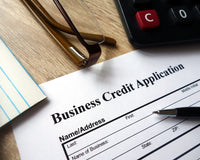All it takes is a moment’s inattention. Someone calls our name, something out of the corner of our eye catches our attention, we switch our glance away from where we’re going for a second, and BAM! — we slip on some spilled liquid or trip on a rogue object and fall flat. However, preventing slips and falls in the workplace can be fairly simple with the right tools. On the surface, trips may not seem like the most worrisome workplace accidents. Common causes of slips, such as uneven flooring, may not be noticeable or may not seem particularly hazardous — especially in work environments that feature more blatant dangers, such as industrial worksites. But ignore such dangers at your peril!
The Cost of Workplace Slips
Without adequate prevention measures, slips, trips, and falls can lead to serious, even debilitating injury, as well as loss of workplace productivity and steep cost. In fact, such tumbles constitute the majority of general industry accidents and lead to nearly 8.6 million visits to the emergency room annually. Recordable slips and falls lead to 11 days away from work and $40,000 per incident, on average. They are also a common source of costly and time-consuming lawsuits. Protect your workplace by following these steps to prevent dangerous slips.
Fall Training
One of the most important steps to preventing slips and falls in the workplace is to train your employees. Knowledge is often the best safeguard against danger, while ignorance is often the cause of preventable accidents. Teach your employees to look out for and report common hazards. In workspaces where spills are common, such as kitchens, it may be prudent to advise or require employees to wear non-slip shoes.
Inspect Your Workplace
Perform a thorough assessment of your workplace with an eye toward any existing or potential slip and fall hazards that can be prevented. As a general rule, it is important to ensure that your facility is well organized and uncluttered. This will make inspection for hazards easier, and will reduce the chance of stray objects, such as tools, winding up on the floor where they don’t belong, creating a slip waiting to happen.
For a start, mark any uneven floor surfaces, such as areas where the floor changes gradation to an upward slant, with bright, photoluminescent warning tape. Also, use prominent labels to denote spaces for proper equipment storage to keep them from turning pathways into inadvertent obstacle courses. At construction and industrial sites, it is a good idea to use anti-skid floor tape to add traction to slippery surfaces, such as metal.
Non-slip safety matting is also a good solution for creating traction on otherwise slick walkways. The stairs are a particularly common site of preventable falls, so be sure to make stair treads as slip-resistant as possible. Consider marking your stairs with anti-skid cleats.
Brighten Up
Poor lighting is correlated with increased accidents in the workplace. Preventing such accidents begins by making sure that all areas are properly lit so that employees can see where they are going and that any emergent slip and fall hazards, such as stray objects or cracks in the ground, are highly visible. Whatever the workspace, there is no excuse for insufficient lighting.
Where there is a temporary slip hazard, such as a spill that needs to be mopped up or an area of floor or ground under construction, cordon off the area with bright
barricade tape or post cones or floor stands in strategic positions around the area. In regions of the workplace where there is a more general or long-term risk, be sure to post prominent signage to warn employees of the danger.
Be Consistent With Maintenance
It is helpful to establish a routine for speedily detecting and cleaning up any spills or leaks that occur in order to prevent consequential slips and falls. This is especially critical in workplaces that truck in a lot of liquid around. Do not attempt to clean up oil-based spills with water, since that will only widen the slippery area. Stay stocked with necessary
spill containment equipment such as mops, sponges and absorbent pads.
Slips off of scaffolds and ladders can pose an even higher risk of injury than slips on the floor. Regularly inspects scaffolds and ladders to ensure that they are sturdy and safe. Inspection tags can help by marking the date of the last inspection, the name of the employee who conducted it and the date when the next inspection is due. As the latter date approaches, keep an eye peeled for any signs of wear and proceed with due caution.
After you have performed the recommended alterations to your workplace, keep preventing falls and slips by conducting regular inspections to ensure that the facility has maintained the new safety levels you have achieved.




